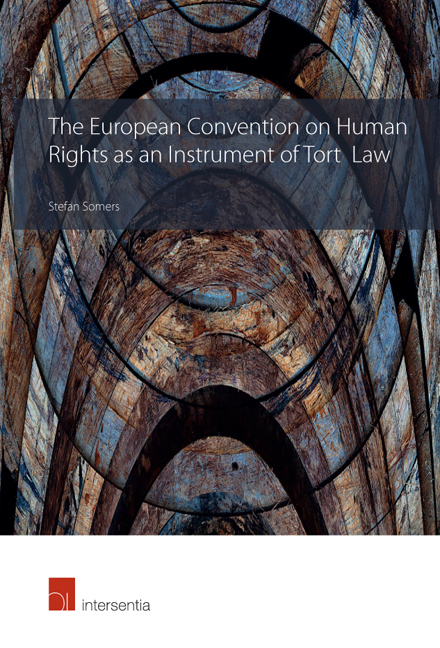Book contents
- Frontmatter
- Dedication
- Contents
- List of Cases
- Introduction
- Chapter 1 Human Rights in Horizontal Relations
- Chapter 2 Articles 13 and 41 ECHR and State Liability
- Chapter 3 The Interaction between Articles 13 and 41 ECHR and Liability in Horizontal Relations
- Chapter 4 Tort Liability as a Violation of Human Rights
- Chapter 5 Article 41 as an Alternative Tort Law System
- Chapter 6 General Outline of Article 41 of the Convention
- Chapter 7 Damages
- Chapter 8 Fault and Blameworthiness
- Chapter 9 Causality
- Chapter 10 Restitution
- Conclusion
- Bibliography
- About the Author
- Frontmatter
- Dedication
- Contents
- List of Cases
- Introduction
- Chapter 1 Human Rights in Horizontal Relations
- Chapter 2 Articles 13 and 41 ECHR and State Liability
- Chapter 3 The Interaction between Articles 13 and 41 ECHR and Liability in Horizontal Relations
- Chapter 4 Tort Liability as a Violation of Human Rights
- Chapter 5 Article 41 as an Alternative Tort Law System
- Chapter 6 General Outline of Article 41 of the Convention
- Chapter 7 Damages
- Chapter 8 Fault and Blameworthiness
- Chapter 9 Causality
- Chapter 10 Restitution
- Conclusion
- Bibliography
- About the Author
Summary
When confronted with a car accident, a professional accident or a case of medical liability, one does not immediately think that it might be useful to appeal to human rights. At first sight it seems unlikely that human rights have any relevance in such a case for the simple reason that tort law and human rights traditionally belonged to different spheres of the law. This book has illustrated that both fields of law are growing towards one another and have become entangled. The reason for this is that the ECHR more and more influences national tort law, both on the level of governmental liability and with regard to the horizontal application of tort law. Accordingly, human rights may be of use in cases of medical negligence, traffic accidents or professional liabilities. The fact that tort law provides a remedy for the violation of material or moral interests of persons, can at least partially be explained by human rights for the reason that a government should ensure that remedies in national law exist when the fundamental rights of people are infringed. Tort law often offers such a remedy. It is not the only system in national law that can provide it, but it is an indispensable one. Tort law has both a compensatory and a deterrent function. Human rights require that national remedies have both these functions. Of course, this does not have to be done via tort law. But tort law is flexible and has a broad field of application. It can provide a remedy when new societal evolutions appear, and human rights require an effective remedy, even when the lawmaker has not yet had the chance to provide an effective remedy. Tort law is not restricted by the principle of legality in the same way as criminal law or social security law. Consequently, it can be used as a deterrent instrument when the ECHR requires so and when no other national legal instrument is at hand.
This book did not only intend to illustrate how human rights can influence tort law. The influence of human rights on tort law is only one side of the book. The book has a dual aim: to investigate how national tort law can be influenced by the ECHR and to assess how human rights can be perceived as tort law.
- Type
- Chapter
- Information
- Publisher: IntersentiaPrint publication year: 2018



